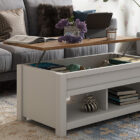Interior design basics are the first things you need to know while designing your home.
Interior design carves the outline of the spaces we live in. It gives these places a direction and a personality. However, that’s not all. Besides visual appeal, interior design also sets the vibe of a place. You may wonder how. The thing is, we think we understand interior design by looking at a place, but in reality, the designing process is more complicated. Several interior design basics contribute to making a place. And as we explore these design fundamentals, we will know why a perfectly designed space feels different from a poorly designed one.
So today, we bring you the five basic concepts of interior design that you might have never noticed before but are extremely important while designing a place. These are the elements that come together to create beautiful and functional interiors.
5 Basic Concepts Of Interior Design
- Balance
- Scale
- Harmony
- Rhythm
- Focal Point
Balance Is Important For Interior Design Basic Knowledge
Balance is about creating an equilibrium in the design. However, equilibrium doesn’t have to be equal. Usually creating an interior design balance can go three ways:
Symmetrical: In this, a room can be designed in a perfect equilibrium state where one part of the room becomes a mirror image of the other. Think about a sofa in your drawing room with an armchair on both sides. This balance is more traditional.
Asymmetrical: This is a more new vibe design where the balance of a room is achieved not by exact replication of one half to the other. However, designers achieve this balance by using different objects. For example, a sofa on one side can be balanced with two chairs on the other side instead of one. Asymmetrical balance creates modern creative spaces. For example, a bohemian interior design.
Radial: Besides symmetrical and asymmetrical, there is also a radial balance. It is when multiple elements in the room radiate from the centre.

Scale Is A Functional Interior Design Basic
While designing a place, scaling is of utmost importance. Scaling is how the objects of your design look compared to the rest of the space. For example, a couch size should be decided or scaled as per the size of a living room. Otherwise, a big-sized sofa might eat up all the space in your living room.
Designers usually go for scaled floor plans to see what elements would work for a space. It helps them choose the right furniture size to avoid irrelevant furniture sizes. Scaling helps in making a space easy to access and move. Without this basic interior design, we might get cramped in our own houses.

Harmony Is The Next Interior Design Basic
Harmony in interior design is about creating a sense of unity in your space. This can be achieved by different elements like colour, texture and material. Without harmony, a place or a home will look inconsistent, hence illogical. Our minds try to connect dots in everything, so anything that looks too disorganised will look cramped. Hence, maintaining harmony is imperative while designing a space. You can create harmony by tieing the entire interior design of your house with a single colour that appears in different elements in the room.

The Rhythm Of Repetition Creates A Coherent Interior Setup
It’s the element that forms the flow in your space. A rhythm is the repetition of visual patterns to add navigation to your place. It creates a path to follow in the design. Think about a ceiling design that guides your vision in a house. Rhythm can be of different types:
- Radiation: Using a round table with chairs radiating off the centre of the table
- Transition: Repeating a design pattern in different spots for easy movement of the eye
- Simple repetition: Repeating a colour throughout the interiors of a place

Focal Point Is One Of The Basics Of Interior Design
While designing a particular space, many designers use a focal point. With the help of this focal point, they decide on the rest of the design of the room. It helps in narrating the design story of a space — keeping one spot or a furniture piece as the main character of the plot. For example, take the modular wall-mounted TV unit in your living room as the focal point and then decide the placement and design style of the rest of the furniture pieces in the room. Having this focal point allows you to have a starting point in your interior design.
“I would say balance and harmony work hand in hand as the basics of interior design. Besides these, it is also crucial to emphasise the right proportions in design. Otherwise, a place can look too cramped or too open,” says Tasneem Arsiwala, the Lead Design Alchemist at DesignCafe, Mumbai.

Common FAQs Related To The Basics Of Interior Design
1. What are the basic elements of interior design?
- Lines
- Colour
- Texture
- Form
- Pattern
- Light
2. What are the four main factors that impact interior design?
- Aesthetics
- Ergonomics
- Lifestyle
- Budget
3. What are symmetry and balance?
Symmetry is an aspect of balance in interior design. A symmetrically-balanced space can be divided into two mirror image halves. Each half would be a replica of the other.
These basic concepts of interior design help us understand the complexities of designing a room. These elements tell us how every aspect of the home’s interior has a backstory to support each of these basic concepts of interior design. And now that you are aware of these basics, go ahead and look for them in your home design.













